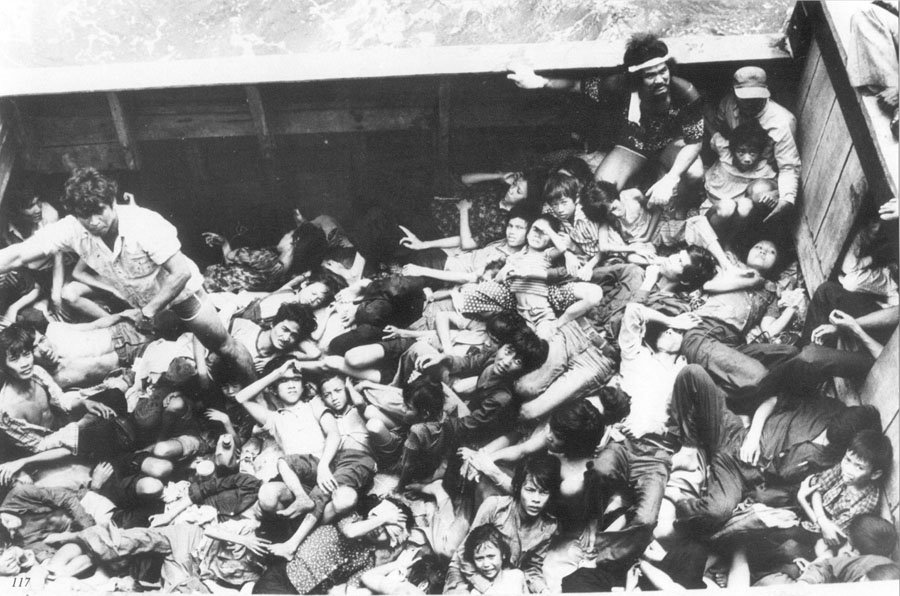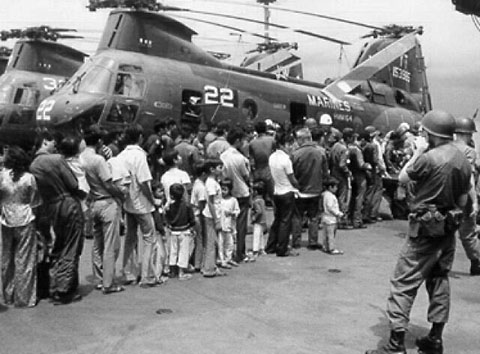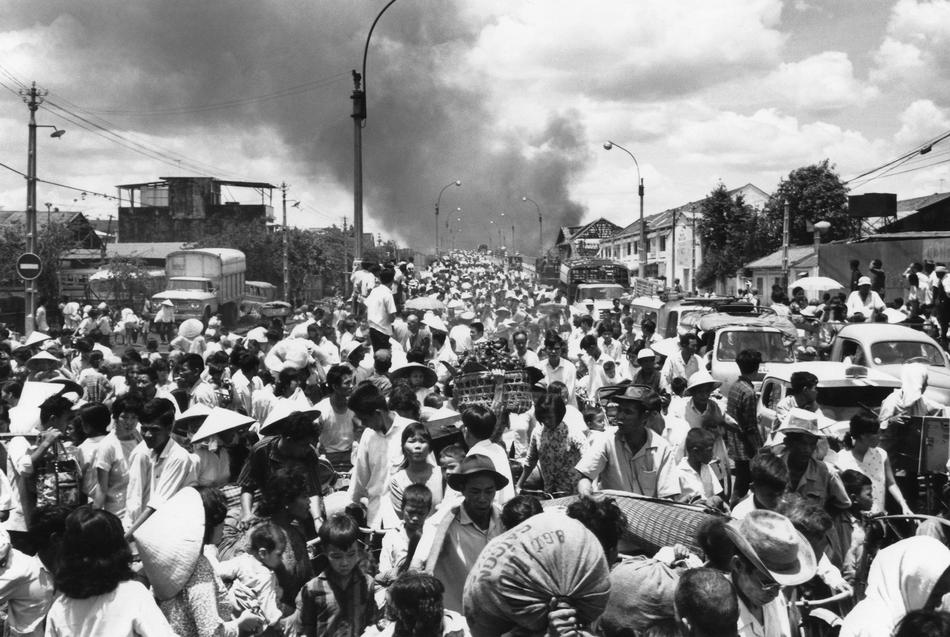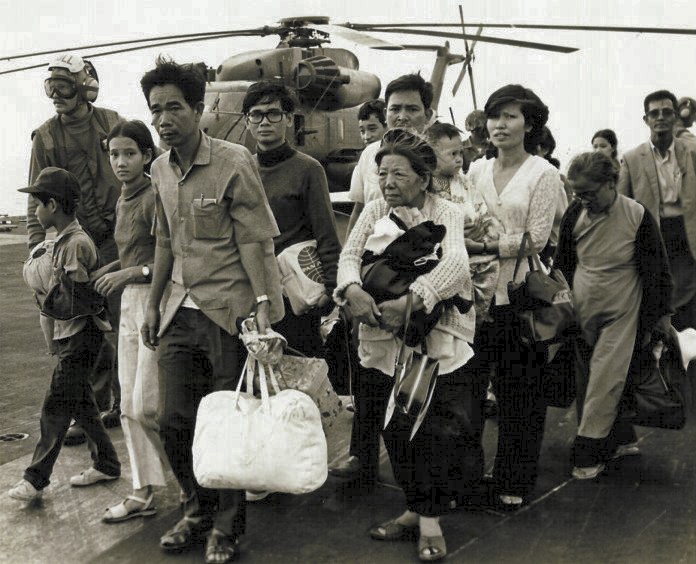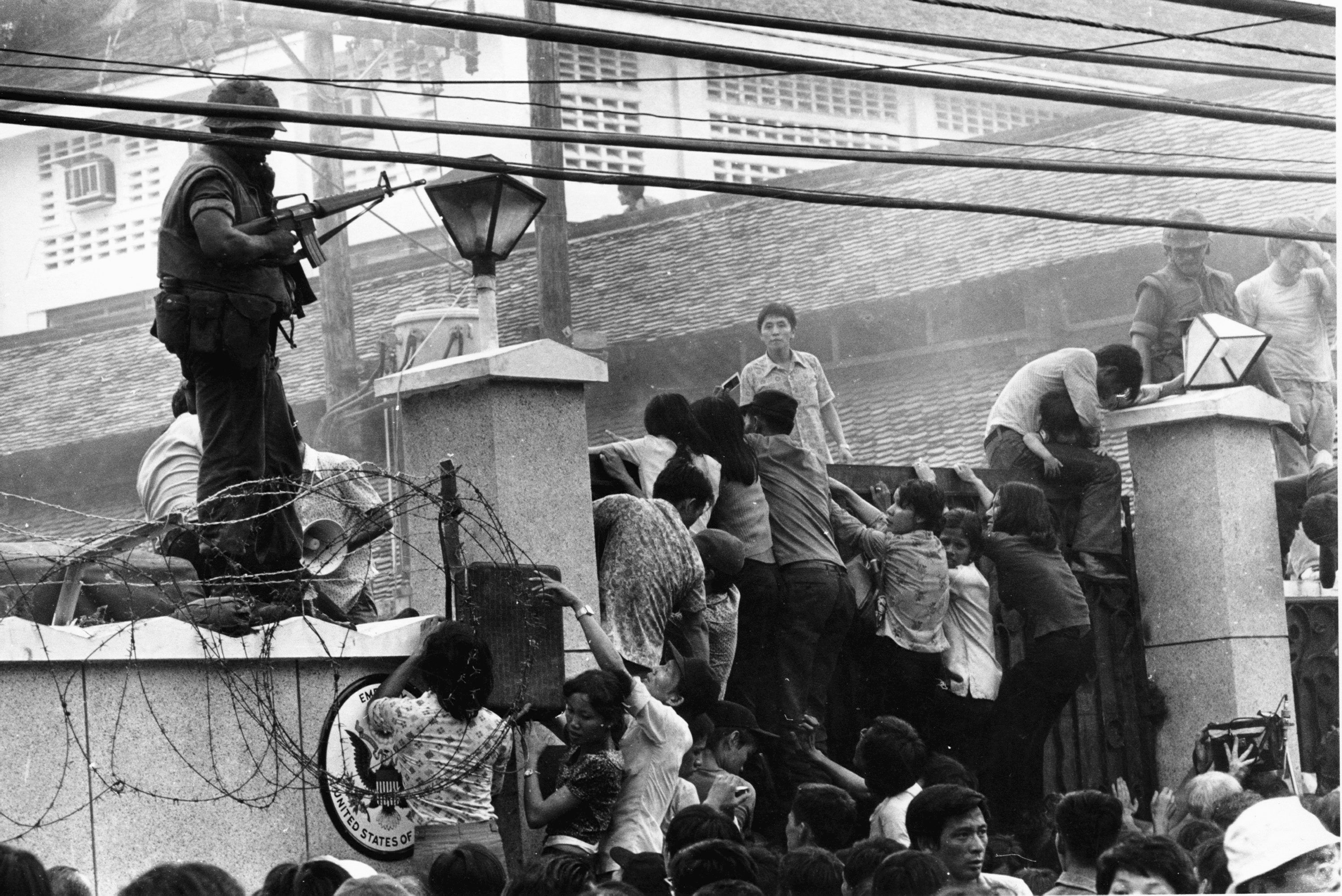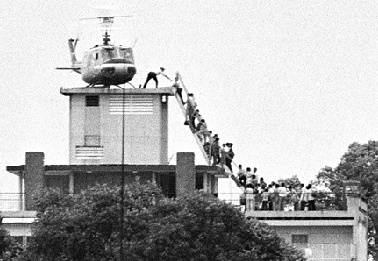Many here do not remember the fall of Saigon in April of 1975. Heck, I barely remember my dad watching the news reports on TV about it as it was going on, with the constant reporting on it. Operation Frequent Wind was the code name for the aerial evacuation of Saigon. Carried out primarily by helicopters of the VNAF, USAF, USMC, USN, and Air America to the US Navy 7th fleet offshore from South Vietnam, fixed wing aircraft were also involved. Some amazing feats of airmanship were recorded during this evacuation, both fixed as well as rotary wing. Examples include a VNAF (South Vietnam Air Force) UH-1H Huey helicopter with 50 persons aboard (normally carries 8-10); a VNAF Cessna O-1 Birddog with 6 persons aboard the 2-person plane which the pilot landed aboard the USS Midway aircraft carrier (that plane now preserved at the USN Aviation museum in Pensacola, FL), and a VNAF C-130A Hercules which departed with 452 persons aboard, including 32 in the cockpit, flown to Thailand from Saigon with just a pilot, an FE and a loadmaster. (that plane reclaimed by the USAF, serving in the ANG, and retired to the front gate display at Little Rock AFB, AR), story below of it.:
As Frequent Wind was primarily rotary-wing centric of an evacuation involving the ships of the US Navy 7th fleet, many stories have been made of the feats of airmanship of the larger ships such as the USS Midway and USS Hancock aircraft carriers, and the USS Blue Ridge command ship. However, smaller ships such as destroyers, cruisers and frigates also had major roles to play in the evacuation. One such frigate (then called destroyer-escorts), the USS Kirk, became swamped with refugees and helicopters, complicated by the fact that the frigate had only a single-spot (one helicopter) flight deck, designed only for smaller helicopters. An excellent documentary on the feat of this ship during that operation is below, including the ditching of a VNAF CH-47 Chinook helo into the ocean next to the ship, after discharging its pax from a hover onto the fantail, it being too large to land on the helo deck of the ship. Also, two more videos of the USS Midway and what was going on on it's flight deck during the evacuation, including the amazing landing of the Cessna O-1 Birddog on the flight deck. Outstanding historical film footage of amazing aviation feats. Even when I was learning helicopters in the military, videos of these VNAF and Air America pilots ditching their Hueys into the Tonkin Gulf, were still used as "real world" training films of what happens in helo ditchings.
A SHORT HISTORY OF C-130A, TAIL # 56-0518 "LAST HERK OUT OF VIETNAM"
The C-130A Hercules, tail # 56-0518, was the 126th built by Lockheed Aircraft corp. of Marietta, Georgia. It was accepted into the Air Force inventory on 23 August 1957. It was assigned to the 314th Troop Carrier Wing at Sewart AFB, Tennessee, from 1964 to 1972. On 2 November 1972, it was given to the South Vietnamese Air Force as part of the Military Assistance Program. A few years later, the aircraft would be involved in a tremendously historic flight.
On 29 April 1975,this Herk was the last out of Vietnam during the fall of Saigon. With over 100 aircraft destroyed on the flight line at Tan Son Nhut Air Base, some of them still burning, it was the last flyable C-130 remaining. In a very panicked state, hundreds of people were rushing to get aboard, as the aircraft represented a final ticket to freedom.
People hurriedly crowded into the Herk, packing in tighter and tighter. Eventually, the loadmaster informed the pilot, Major Phuong, a South Vietnamese instructor pilot, that he could not get the rear ramp closed due to the number of people standing on it. In a moment of inspiration, Major Phuong slowly taxied forward, then hit the brakes. The loadmaster called forward again stating he had successfully got the doors closed.
In all, 452 people were on board, including a staggering 32 in the cockpit alone. Using a conservative estimate of 100 pounds per person, it translated into an overload of at least 10,000 pounds. Consequently, the Herk used every bit of the runway and overrun before it was able to get airborne.
The target was Thailand, which should have been 1:20 in flight time, but after an hour and a half, the aircraft was over the Gulf of Slam, and they were clearly lost. Finally, a map was located, they identified some terrain features, and they were able to navigate. They landed at Utapao, Thailand after a three and a half hour flight.
Ground personnel were shocked at what "fell out" as they opened the doors. It was clear that a longer flight would almost certainly have resulted in a loss of life. In the end, however, all 452 people made it to freedom aboard this historic C-130.
Upon landing, the aircraft was reclaimed by the United States Air Force and was assigned to two different Air National Guard units for the next 14 years. On 28 June 1989, it made its final flight to Little Rock Air Force Base, current home of the 314th Airlift Wing, and was placed on static display.
As Frequent Wind was primarily rotary-wing centric of an evacuation involving the ships of the US Navy 7th fleet, many stories have been made of the feats of airmanship of the larger ships such as the USS Midway and USS Hancock aircraft carriers, and the USS Blue Ridge command ship. However, smaller ships such as destroyers, cruisers and frigates also had major roles to play in the evacuation. One such frigate (then called destroyer-escorts), the USS Kirk, became swamped with refugees and helicopters, complicated by the fact that the frigate had only a single-spot (one helicopter) flight deck, designed only for smaller helicopters. An excellent documentary on the feat of this ship during that operation is below, including the ditching of a VNAF CH-47 Chinook helo into the ocean next to the ship, after discharging its pax from a hover onto the fantail, it being too large to land on the helo deck of the ship. Also, two more videos of the USS Midway and what was going on on it's flight deck during the evacuation, including the amazing landing of the Cessna O-1 Birddog on the flight deck. Outstanding historical film footage of amazing aviation feats. Even when I was learning helicopters in the military, videos of these VNAF and Air America pilots ditching their Hueys into the Tonkin Gulf, were still used as "real world" training films of what happens in helo ditchings.
Last edited:




